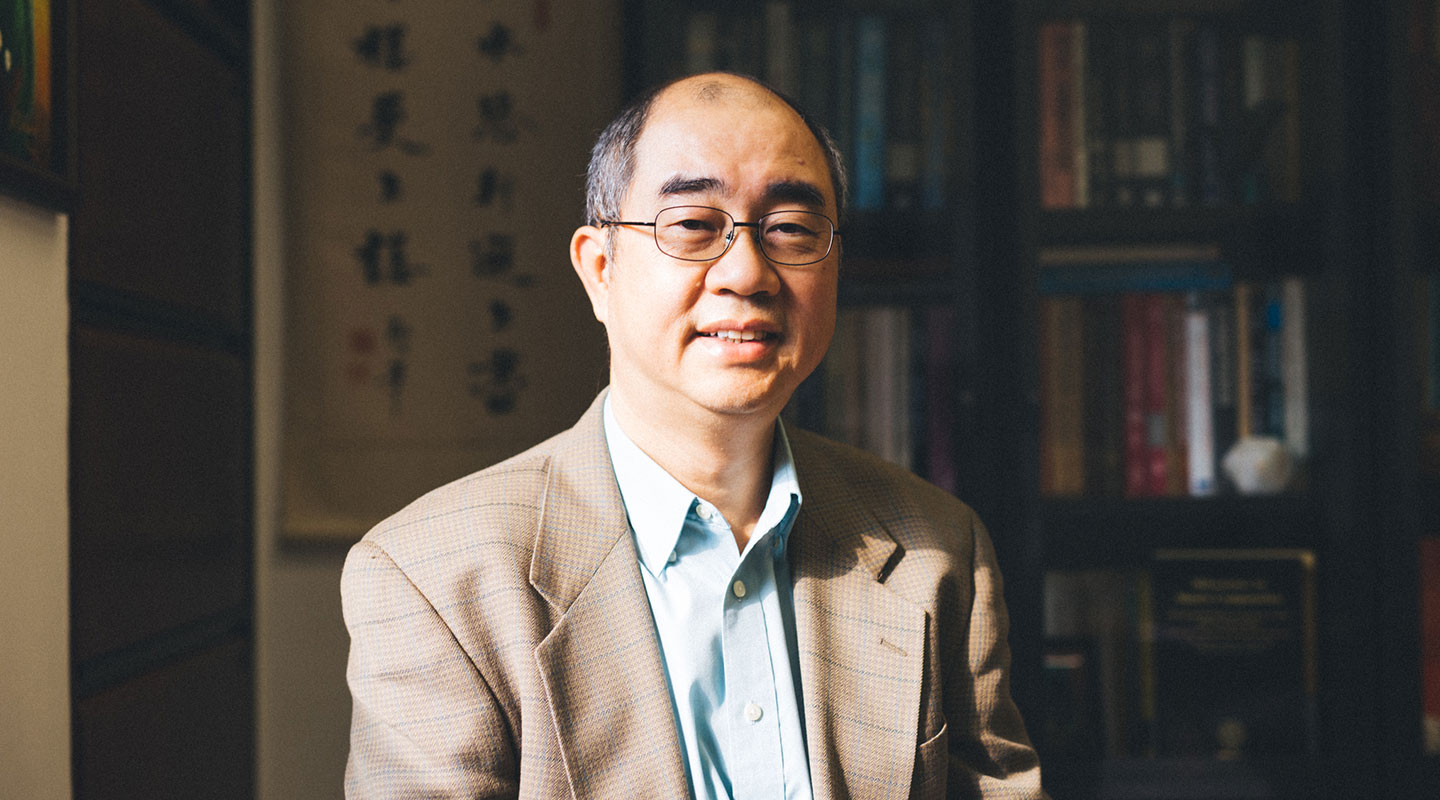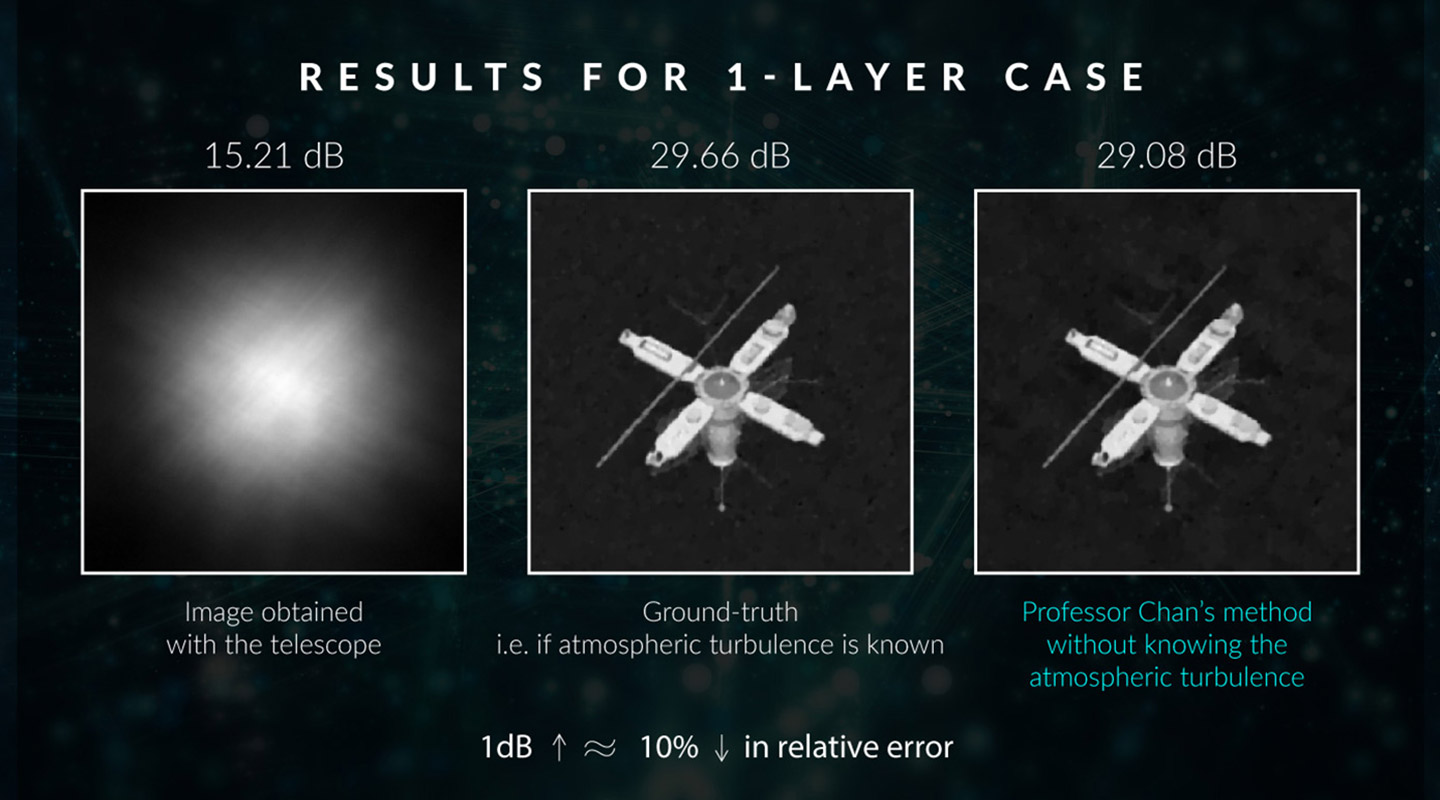Dear readers, With the launch of e-newsletter CUHK in Focus, CUHKUPDates has retired and this site will no longer be updated. To stay abreast of the University’s latest news, please go to https://focus.cuhk.edu.hk. Thank you.
Refined Perception, Refined Taste
CUHK mathematician solves equivocation with equations

Prof. Raymond Chan
Department of Mathematics
Astronomers will be gazing with greater clarity at the stars, as a result of the work of CUHK professor Raymond Chan Hon-fu – and art forgers should be careful.
An algorithm developed by Professor Chan is the fastest way of solving Toeplitz systems, a form of complex linear equations. By breaking down image and signal processing into mathematical terms, he has been able to design computer algorithms that can dramatically increase the image quality of telescopes or the verification of van Gogh paintings.
“When you see different problems you try to take out the essence of the problem, and the essence of these problems is the same,” Professor Chan, the chairman of the Department of Mathematics, says. “The importance is the mathematical thinking,” to translate a real-world problem into abstract thought.
In a simple general mathematical system, such as 2x + 4y = 8, the values 2 and 4 are arbitrary, with endless potential permutations. Many different calculations could produce the same result. But in Toeplitz systems or matrices, the numbers, however complex the system, have very specific relationships. Their values are fixed, based on the system. This makes them highly predictable, allowing for fast algorithms to solve them automatically.

Toeplitz systems occur naturally when attempting to remove noise and blur from images or signals. If an image is blurry because of distortion by, say, objects being out of focus, the pixels have passed through a medium that has “convoluted” them or mixed them together. To make the image clear again, you must invert the convolution, backing out the pixels to their original state in the same way they were mixed together.
The same kind of Toeplitz problem occurs in financial markets with the pricing of derivatives. Professor Chan’s work has concentrated on adapting his algorithm to apply to de-blurring different types of image.
His algorithm is substantially quicker in solving image problems. In a normal “n-by-n” Toeplitz system, in which n is an unknown number that must be established through solving n number of equations, the length of time to solve the problem is normally about n2 calculations. Professor Chan’s algorithm solves image problems in about n calculations.
Professor Chan’s interest in van Gogh developed recently, when he visited a friend in the Netherlands, at the Delft University of Technology. His friend was working with a Dutch museum that supplied a data set of 79 paintings, 64 of them known for sure to be authentic van Goghs.

But others had initially been attributed to the artist only later to be proven to be not 100% his work. The challenge was to identify the genuine paintings and the problematic ones. Professor Chan realized he had something to offer.
By adapting and then introducing his algorithm into the analysis, Professor Chan and his group were able to identify the originals 88% of the time – the highest accuracy generated by any other automated technique. It’s better than the naked eye, and highly useful to experts in narrowing down their focus and backing up their own analysis.
With the right system development, the process can of course be adapted to examine the work of other artists. One of Professor Chan’s former students is working with a professor at the Hong Kong University of Science and Technology to apply Professor Chan’s algorithm-based process to fields such as classical Chinese art.
Professor Chan’s initiation into solving Toeplitz systems came when trying to improve images from ground-based telescopes. Telescopes see a blurry image of an object in space such as a satellite because of turbulence in the atmosphere, the same kind of “distraction” that makes stars twinkle.
The problem is that a computer system trying to decode an image does not know the extent of the turbulence. Professor Chan developed his algorithm to apply it to that challenge and found, using test images, that he could generate an accuracy of 29.08 decibels for a satellite image with unknown blurring. That is around a 5% degree of error from the original, and comparable to an accuracy of 29.66 decibels when a test that knew the exact level of atmospheric blurring.
His collaborator, Robert Plemmons, used the results of their joint work to testify before a US congressional committee, in the 1997 appropriations hearing for the US Department of Defense, to stress the importance of developing such technology for satellites and for defense purposes. But it is equally applicable to astronomy.
Professor Chan began in 2008 to apply his algorithm to the problem of enhancing video images using multiple video stills while moving a camera. He then realized in 2010 that this process could again be applied to the world of telescopes, by moving the telescopes in a regulated motion. He is also working with a doctor in Taiwan to use multiple images to improve the accuracy of parallel magnetic-resonance imaging.
“When I see a problem, and I think it’s similar to a problem I’ve done before, I go into it,” Professor Chan says. “In mathematical terminology, I created a model that emulates a problem, and the algorithm will apply to the model and break it down and get a result.”
By Alex Frew McMillan